The aircraft for today is the one that was initially created for the service of the RAF but the capabilities of it impressed the USAF to build this aircraft under the license locally. The aircraft we are talking about is the Martin B-57 Canberra which was inspired by the original English Electric Canberra. The Martin B-57 Canberra was produced for the USAF back in 1953 to serve as their tactical bomber as well as the photo-reconnaissance aircraft. The company behind the production of the Martin B-57 Canberra under license from the original producer English Electric was the Glenn L. Martin.
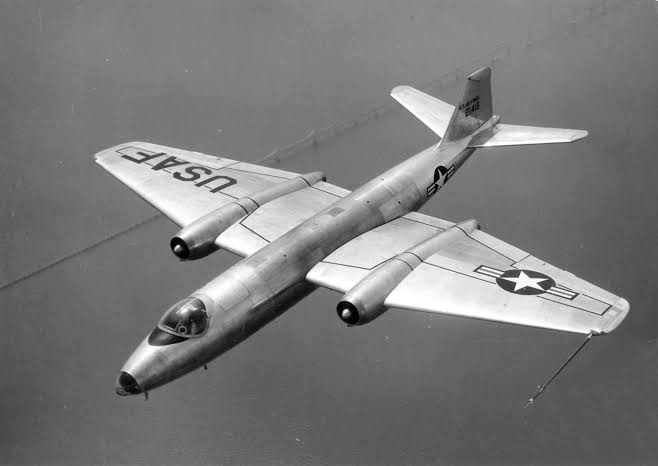
The initial versions of the Martin B-57 Canberra were in similarity with the British made Canberra but then Martin made several changes to make the aircraft a more US one.
Just like the English Electric Canberra, the Martin B-57 Canberra also holds the title for being the first jet-powered bomber for the US Air Force to actually drop bombing ordnance in a combat situation. The main use of this aircraft was carried out during the Vietnam War. During that time, any other variants of the Martin B-57 Canberra were created to serve the mission roles of aerial reconnaissance and electronic warfare.

The other notable operators of the Martin B-57 Canberra include the Pakistani Air Force which sued it during the Indo-Pak War and Taiwan.
The aircraft was retired from the service of USAF back in 1983 and few of them went on to serve the private agencies of the US like NASA.
Need for Martin B-57 Canberra rises from the limited service of A-26:-

When the US army ventured into the Korean War, they dumped their stockpile of military aircraft from the World War II-era which brought one notable aircraft named Douglas A-26 to be revived back. The aircraft was initially introduced back in 1944 as the light-medium grade bomber with a platform to carry out the heavy assault.

Nearly 2452 of these bombers were manufactured and by the time in the 1950s, only a handful remained in combat-ready condition. In addition to this, these aircraft were of the era with limited all-weather operation capability which limited the use of A-26 as the all-weather and day time bomber. This caused the need for a new type of all-weather bomber, which turned out to be the Martin B-57 Canberra.
Origin:-

Back on 16th September 1950, USSAF placed a requirement for an aircraft that would at least fulfill the criteria of having a speed of 630 mph with a range of 1150 miles at a ceiling altitude of 4000 feet. Due to the war raging on in Korea, the requirement also added for the modification on any existing aircraft of the same specs but it was to have increased speed which was of the essence.
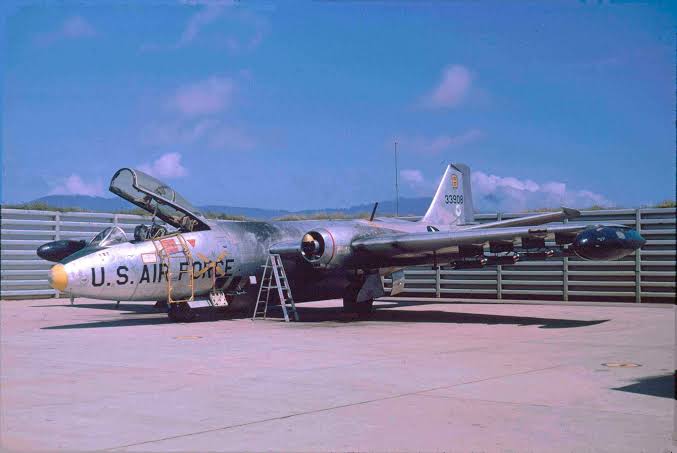
The only aircraft to come close to these requirements was the British RAF’s English Electric Canberra which was selected for making the prototype locally designated as XB-51.
Production under license:-
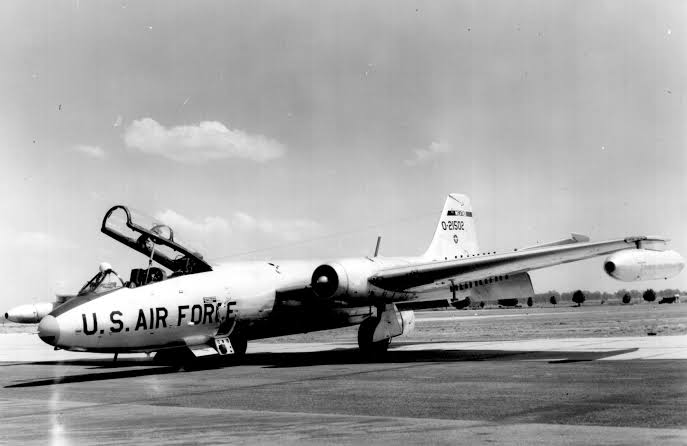
The aircraft’s prototype was green-lighted for local production by the USAF and the company selected was the Glenn L. Martin which started the production back in April 1951 under the license form English Electric. Martin gave it the name Model 272 while USAF designated it as the B-57 along with retaining the name Canberra.
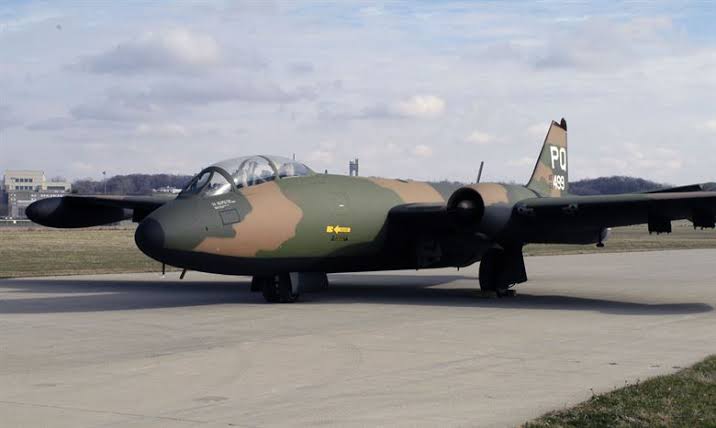
The very first of this Martin B-57 Canberra was designated as B-57A which had the resemblance to their British counterparts as they were equipped with 2 of the Armstrong Siddeley Sapphire engines which were also produced locally in the US under the license by the Wright Company.
First flight and the total number of units produced:-

The very first successful flight of the Martin B-57 Canberra was carried out on 20th July 1953 with deliveries to USAF being made in August of that very same year. But by the time the Martin B-57 Canberra was inducted into combat service the Korean War had already ended in 1953.
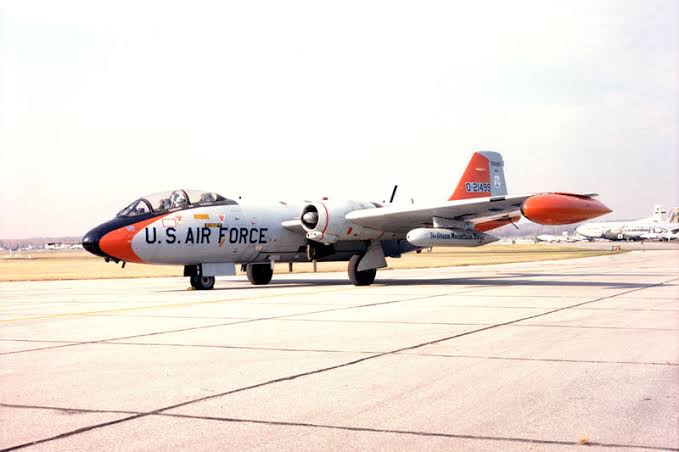
Still Glenn L. Martin continued on with the production and created nearly 403 of these bombers from the year 1953 to 1957 which went on to serve both locally as well as in abroad conflicts; notably the Vietnam War.
Design and powerplant:-
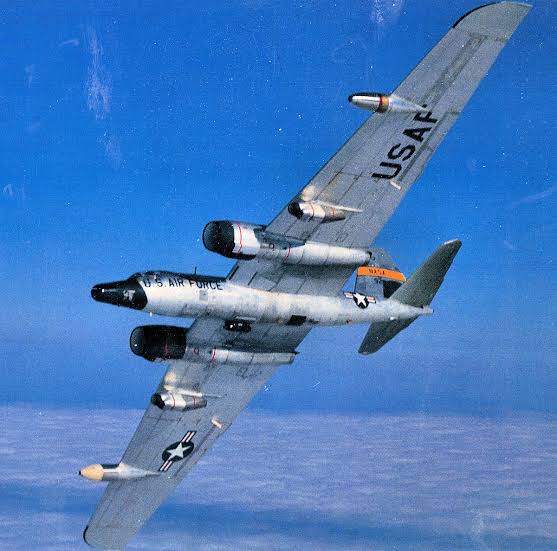
The B-57A was improved to create the B-57B to have the more UDS touch and for that, the tandem seating was introduced for the 2 crew members; one was for the pilot and other for a navigator, along with an all-new canopy. As for the airbrakes, they too were replaced from being under the wings to being under the fuselage.
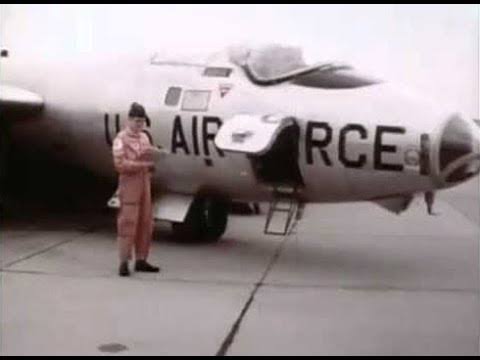
The B-57B model was powered by 2 of the Wright J65 W-5 turbojet engines each of which created a thrust of 7220 lbs. this allowed for the Martin B-57 Canberra to fly at a top speed of 598 mph while the cruising speed was almost 475 mph. As for the combat range, the aircraft could fly for about 950 miles while on ferry range, it was about 2720 miles. The service ceiling for the Martin B-57 Canberra was recorded to be a maximum of 45100 feet which was achieved with a climbing rate of 6180 ft/min.
Armaments:-
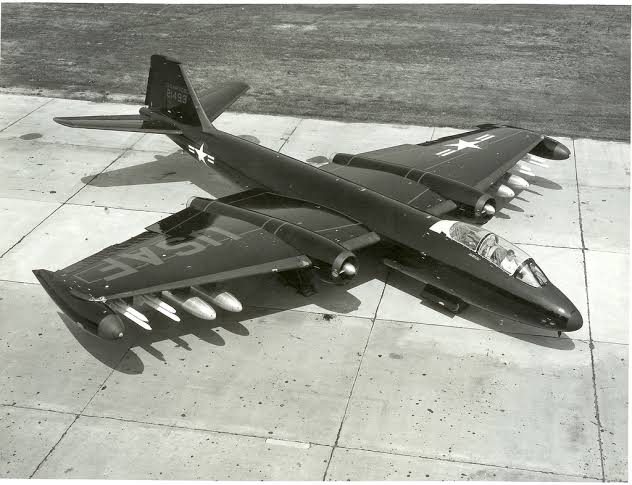
The Martin B-57 Canberra had the following armament configuration.
- 8 of the M2 Browning Heavy Machine guns of 0.50 caliber
- 4 of the M39 cannons of 20mm mounted in its wings; this was done later
As for the ordnance payload carrying capacity, the aircraft could store up to 4500 lbs internally while externally it could lift about 2800 lbs under the wings. The internal ordnance carrying capacity as sued to even store the nuclear payloads.
The underwings were further modified to launch the unguided rockets as well.
Other operators:-
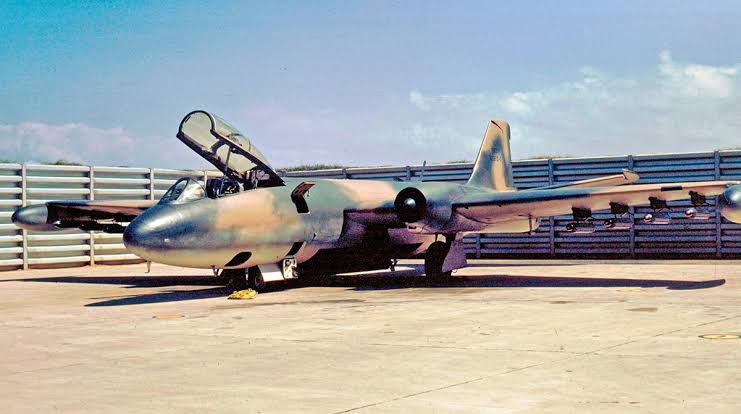
The aircraft, other than the USAF, served two other operators during its service life. The first one was Pakistan that served during the Indo-Pak conflict from 1960 to 1970. This was a special conflict as both of these nations were making use of the same product with one supplied from the US; the Martin B-57 Canberra to Pakistan, the other one was supplied by the UK; the English Electric Canberra from the UK.
The Martin B-57 Canberra served the Pakistan Air Force well until 1985. The only other foreign operator for the Martin B-57 Canberra was Taiwan.
Retirement:-

The service of the Martin B-57 Canberra with USAF saw its end back in 1983 while few of them were retained by the special US agencies for non-combat use like NASA.
Related Content
Amazing facts about the English Electric Canberra; First Generation British Medium Jet Bomber
Interesting facts about the AMX International AMX; The Ground-Attack Jet Fighter

